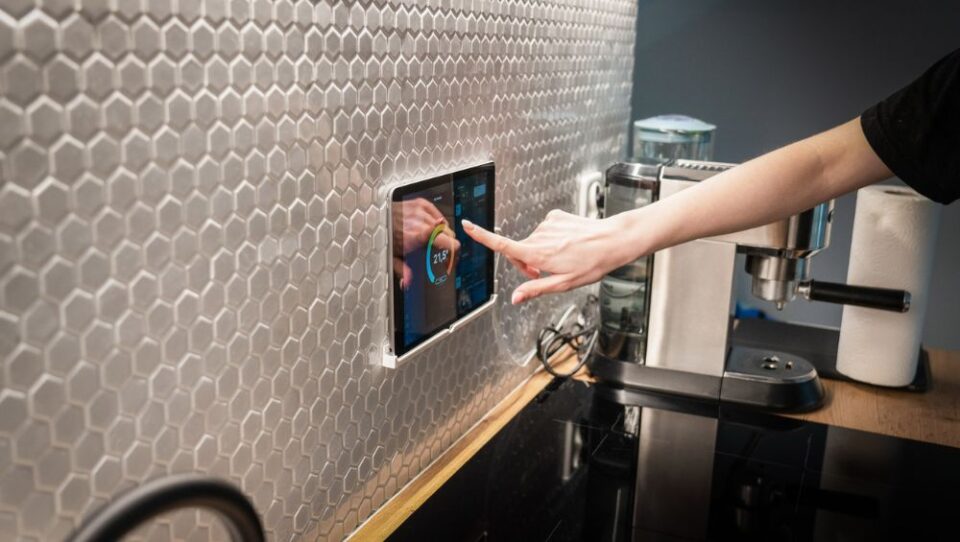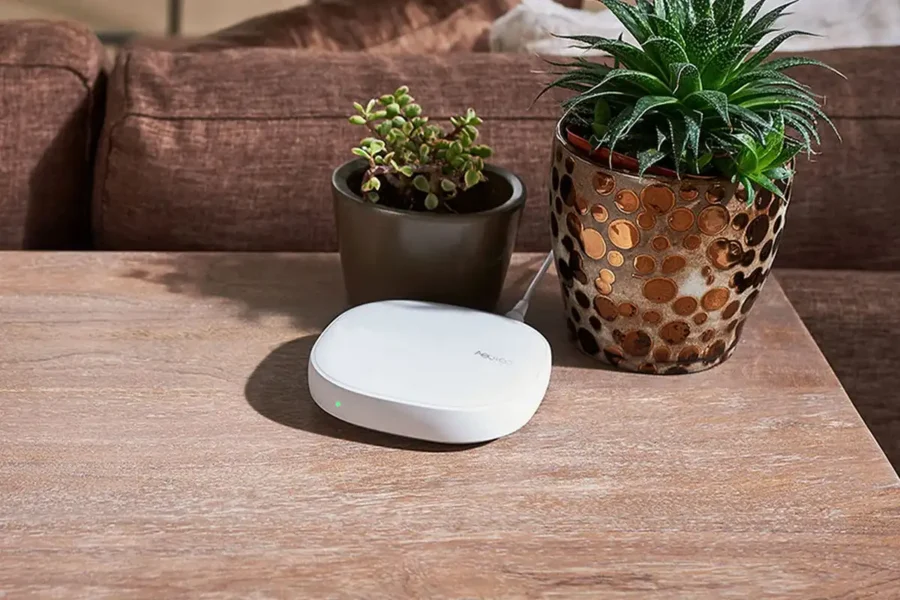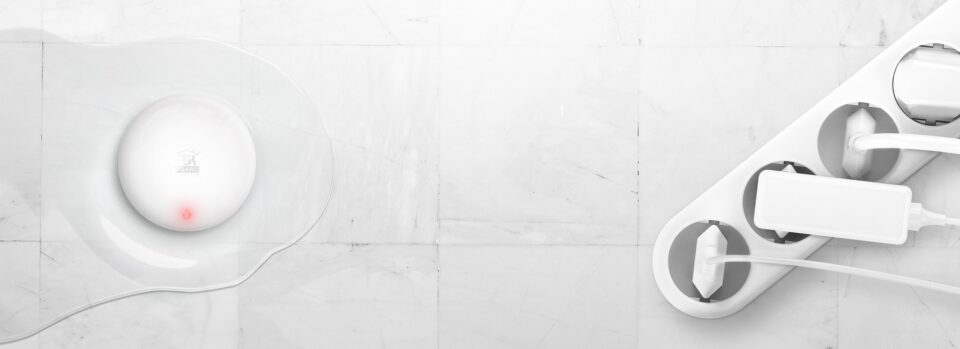In recent years, the concept of a “smart home” has evolved from a futuristic idea to a practical reality. Home automation systems have emerged as an innovative solution, transforming the way we interact with our living spaces. These systems integrate technology into various aspects of the home, offering a seamless and interconnected experience that enhances comfort, convenience, and efficiency for homeowners. From controlling lighting and temperature to managing security and entertainment, home automation has revolutionized the way we live.
Table of Contents
ToggleEvolution of Home Automation
The journey of home automation dates back to the invention of the X10 protocol in the 1970s. X10 enabled communication between devices over existing electrical wiring, allowing homeowners to remotely control lights and appliances. However, the technology had limitations, such as signal interference and reliability issues.
Advancements in wireless communication and the proliferation of the internet led to the development of more sophisticated home automation systems. Companies introduced hubs and protocols like Zigbee, Z-Wave, and Wi-Fi, enabling devices to communicate seamlessly and paving the way for the modern smart home.
What is Home Automation?
Home automation refers to the integration of technology and devices within a home environment to automate and control various systems and functions. This technology enables homeowners to remotely manage and monitor household appliances, lighting, heating, cooling, security cameras, entertainment systems, and more, typically through a centralized system or mobile applications.
The core principle of home automation is to create a connected ecosystem where different devices and systems communicate and operate together seamlessly, often enhancing convenience, comfort, efficiency, and security within the household.
Home automation systems can encompass a wide array of technologies, including sensors, smart devices, Wi-Fi connectivity, voice assistants, and specialized software. These systems enable users to set schedules, create personalized settings, receive notifications, and remotely control devices, often via smartphones, tablets, or voice commands.
The scope of home automation can vary from simple setups, such as controlling a few lights or adjusting the thermostat remotely, to more complex and comprehensive systems that manage multiple aspects of a home, including energy usage optimization, security monitoring, and integrated entertainment systems.
Key components of home automation systems may include:
- Smart Devices: These are appliances or devices equipped with connectivity features that allow them to be controlled remotely or automated based on preset conditions. Examples include smart thermostats, lighting systems, door locks, cameras, and smart kitchen appliances.
- Central Hub or Controller: This serves as the central command center, connecting and coordinating various smart devices. It enables users to manage and control multiple devices through a single interface or app.
- Sensors: These detect changes or conditions in the environment, such as motion sensors, temperature sensors, door/window sensors, or smoke detectors. They trigger actions or alerts based on predefined rules or user preferences.
- Automation Protocols: Different communication protocols like Zigbee, Z-Wave, Bluetooth, or Wi-Fi facilitate communication between devices, ensuring compatibility and smooth operation within the system.
Home automation systems offer numerous benefits, including increased convenience by allowing remote access and control, energy efficiency through optimized usage of resources, enhanced security through monitoring and alerts, and customization to fit individual preferences and routines.
As technology continues to advance, home automation systems are evolving to offer more sophisticated features, greater integration, and improved user experiences. They represent a significant aspect of the growing trend toward interconnected smart homes, transforming the way people interact with and manage their living spaces.
Why Do You Want A Smart Home?

Maybe you’re focused on reducing your energy bills and lowering your environmental impact? By implementing a Home Automation system, you gain the ability to conduct thorough analyses pinpointing areas in your household that are contributing to excessive expenses.
If you’re not keen on delving into charts and statistics, simply configure the system to optimize your energy consumption. Turn off lights in unoccupied rooms, adjust heating levels during absences, and deactivate appliances at the socket to minimize standby power usage.
Or perhaps your main objectives revolve around convenience and coziness, emphasizing your family’s well-being. Your Smart Home can oversee air quality, manage window openings as needed, and regulate the HVAC system to ensure a consistent supply of fresh and filtered air throughout the house.
Given the complexities of modern life, the prospect of some form of assisted living is appealing. Having your personal assistant readily available can be invaluable! Whether you’re fond of Alexa, a fan of Siri, or an enthusiast of OK Google, a Voice Assistant serves as a gateway to interact with your Smart Home in unprecedented ways.
Controlling lights, adjusting room temperatures, handling incoming calls, monitoring visitors at the front door, or initiating entire sequences of actions with a single command—voice control is no longer confined to the realm of movies. Now, we all have the opportunity to emulate Tony Stark by conversing with our personalized version of Jarvis!
Understanding the Advantages of Home Automation
The full scope of a Smart Home’s capabilities might not be immediately apparent, yet it extends to numerous scenarios and spaces within your residence.
Lighting
Diverse rooms necessitate varying lighting requirements, and adjusting to different activities. Dim lighting in the living room suits music sessions, while responsive lighting syncs with moving images for movie viewing. However, for activities like reading or sewing, consistent and brighter illumination is often preferred.
Home Automation grants you and your family the authority to manage lighting effortlessly, adapting it to varying needs throughout the day—without manual intervention.
Heating
Smart Home Heating permits swift adjustments in an entire room with a single button press, aligning with daily schedules or activities such as cooking, exercising, or enjoying a movie night with family in chilly weather.
Heating your home may typically operate without much attention. Yet, comparing energy bills over recent years might reveal significant increases. A Home Automation system aids in monitoring energy usage, curbing it, and consequently trimming costs.
Security
Smart Home Security fortifies your home against intrusion, break-ins, and property damage akin to traditional alarm systems. Upon detecting such threats, the Home Automation system triggers alarms, sends alerts via text or email, and can even utilize light flashes to attract attention.
Automating lights during absences or nights bolsters home security. Motion-triggered illumination in dark zones or simulating occupancy by toggling lights while on vacation enhances the sense of occupancy.
Energy Efficiency
Consumer interest in conserving energy stems from reducing bills and minimizing environmental impact. Home Automation streamlines energy management by monitoring usage patterns and instituting controls, enabling cost-effective and eco-friendly practices.
Emergency Preparedness
A Smart Home vigilantly monitors potential emergencies like flooding, fire hazards, air quality, or carbon monoxide levels. Real-time surveillance allows early detection and prompt responses, averting disasters.
Comfort
Home Automation extends comfort and ease beyond lighting and heating, encompassing motorized systems like blinds, curtains, or garage doors. Effortlessly controlled remotely or automatically, these systems contribute to a more comfortable living environment.
By entrusting your Smart Home to manage these aspects, you can focus on the significant aspects of your daily life that truly matter.
Components of Home Automation Systems
As previously mentioned, all Smart Home systems incorporate similar components, also known as IoT or “Internet of Things” devices. These components facilitate diverse actions, monitor environmental conditions, and respond to various events within your home.
Each component type serves a specific function within the system, collectively offering the flexibility to manage your home and keep you informed about ongoing activities.
System Controller (Gateway / Hub / Bridge)

The controller, referred to as the smart home hub, gateway, or bridge, oversees your Smart Home operations. It facilitates device addition and configuration and orchestrates “logic” sequences or flows, enabling automated tasks, like activating lights based on motion or adjusting heating before your family arrives home to ensure a cozy environment.
Connected to your Internet router via WiFi or Ethernet, the controller enables system control from smartphones, tablets, or computers. It allows remote access, even when away, through the Internet. Installing a dedicated app on your smartphone or tablet provides control, whether you’re at home or across the globe.
Controllers may focus on specific technologies (e.g., Z-Wave) or incorporate multiple technologies (e.g., Z-Wave, Zigbee, WiFi). Opting for a controller supporting these standards initially is advisable for most Smart Homes. Additionally, check for integration possibilities with proprietary products or systems (e.g., Hive, Tado, Visonic), potentially via IFTTT or Cloud services.
Read more: Top 5 Smart Home Hubs in 2023
Actuators
Actuators, and smart devices, execute physical actions, managing lights, heating, and appliances. The various types include:
- Switches (Relays): Controls power supply to lights or appliances (On or Off).
- Dimmers: Adjusts light brightness and controls On/Off functions.
- Roller Shutters: Manages motorized blinds, shutters, or curtains.
- Modules: Small units wired into electrical circuits, available as relays, dimmers, etc., often installable behind existing switches.
- Wall Plugs: Controls attached appliances, available for On/Off, dimming, or power monitoring.
- Wall Sockets: Replaces standard sockets with wireless-controlled versions.
- Boiler Receivers: Wired into boiler circuits for wireless boiler control, typically used with wireless thermostats.
- Radiator (TRV): Regulates radiator hot water flow based on setpoint temperature.
- Siren: Sounds an alarm triggered by the Home Automation system or other devices like smoke detectors.
- Door Lock: Controls and monitors access to your home or parts of the building.
- Smart LED Bulbs and LED Strips: Wirelessly controlled lighting solutions.
Sensors

Sensors monitor your home, detecting motion, door opening, or specific environmental conditions like light, temperature, or humidity. They play a crucial role in enabling automated actions within a Smart Home:
- Motion Sensors: Detect motion via PIR sensors.
- Door/Window Sensors: Indicate door or window openings/closings.
- Temperature Sensors: Monitor temperature for automated actions.
- MultiSensor: Houses multiple sensors (motion, light, temperature, humidity, etc.).
- Thermostat: Controls heating based on room temperature.
- Flood Sensors: Detect water presence, allowing alerts or water supply shutdown.
- Smoke Sensors: Trigger alarms on detecting smoke or excess heat.
- Power/Energy Monitoring: Monitors appliance or house energy consumption.
Read more: Best Smart Sensors for Your Smart Home in 2023
Remote Controls
Remote controls provide physical system control alongside smartphone or tablet access:
- Handheld: Controls devices, scenes, or moods like a TV remote.
- Wireless Wall Switch: Wall-mountable remote control.
- Key-Fob: Portable control unit, ideal for home re-entry.
Smart Security Cameras
A smart CCTV System or IP Camera System offers top-tier security for your residence. By strategically placing security cameras around your property, you gain comprehensive visibility into ongoing activities. Key entry points and potentially vulnerable areas like gates, fences, and French doors can be safeguarded by dedicated surveillance cameras.
Real-time video feeds and images can be accessed on a computer, smartphone, or even a television. Crucially, these visuals can be stored either on a DVR (hard drive) or in the Cloud, enabling retrospective viewing of events. This proves invaluable in unfortunate instances of a break-in.
Certain smart security cameras, such as the Ring Video Doorbell or Nest Hello, are designed as doorbell and intercom devices. They provide the convenience of instantaneous notifications when someone approaches your front door, facilitating two-way conversations. This functionality is ideal for creating the illusion of occupancy, even when you’re relaxing on a beach miles away!
Voice Assistants
Throughout this guide, we’ve emphasized Voice Assistants, and their substantial integration into our daily lives in recent years.
Whether accessed through your smartphone, tablet, or a dedicated speaker device, voice control and feedback have become integral components of any Home Automation system.
Usually, Voice Assistants are affiliated with specific platforms provided by manufacturers. For instance, Alexa operates on Amazon Echo Smart Speakers and Screens, OK Google functions on Google Home devices like the Google Nest Mini, and Siri is accessible through Apple HomePod speakers.
Read more: The Best Smart Sensors for Alexa, HomeKit, and SmartThings
Audio Visual (AV) / Multimedia Integration
Traditionally, this segment was not a direct inclusion within Home Automation systems. However, many individuals aspire to manage their multimedia devices to establish an integrated setting where lighting, blinds, TV, music, and video can be regulated concurrently.
InfraRed (IR) Compatibility
Most AV and TV equipment relies on Infra-Red (IR) for control, underscoring the importance of ensuring that your potential Smart Home Controller supports third-party devices capable of integrating IR equipment.
For those planning extensive AV integration into their Smart Home setups, selecting a Smart Home Controller equipped with built-in IR functionality might prove most practical. The Athom Homey, for instance, incorporates IR, allowing direct control of IR devices sans additional adapters.
Network (IP) Controlled Equipment
Numerous modern multimedia devices connect through Ethernet or WiFi networks (IP network) – encompassing Smart TVs, AV Receivers, Music Players, and Stereos. Some of these gadgets can be harmonized into your Smart Home by issuing commands directly through the network.
Most Home Automation controllers offer software plug-ins for a wide array of contemporary appliances, simplifying their inclusion into your Scenes and Logic. With a simple voice command to your Voice-Activated Assistant—such as “Alexa, play movie”—your lighting adjusts, blinds descend, AV and TV activate, and the latest blockbuster commences—effortlessly, all without physical interaction!
Read more: Smart Home Features That Are a Must-Have for Every Room
Tips to Begin Your Smart Home Journey

Embarking on a smart home setup? Here’s a breakdown to get you started:
Choose Home Automation Products and Systems
Home Automation systems generally fall into two categories. The first group utilizes widely used wireless technologies like Z-Wave, Zigbee, and WiFi. They offer compatibility across various vendors and often seamlessly integrate with one another.
On the flip side, there are “proprietary” systems employing undisclosed wireless technologies. While these systems excel in their designated tasks, they might not directly collaborate with other systems. Nonetheless, some provide integration options via their proprietary Cloud services or through third-party platforms like IFTTT.
Start Small with a Suitable Product or System
Begin your journey into the “Smart Home” world by focusing on a single room or a specific task. Instead of trying to automate your entire house in one go, start with a product that meets your immediate needs. It could be something as simple as controlling lights or managing heating. Pick a system that aligns with your current requirements.
Ensure Compatibility with Other Systems
When selecting your initial product or system, ensure its compatibility with products and systems from various manufacturers. This might not be critical at the moment, but it opens doors for future expansions. Opt for products utilizing “standard” wireless technologies like Z-Wave, Zigbee, or WiFi.
Consider Voice Assistants
Voice Assistants are in vogue and serve as a good guide for choosing compatible products. Look for products compatible with popular voice assistants like Alexa, Siri, or OK Google. Check compatibility with ecosystems such as Apple Homekit, Google Assistant, Google Nest, and Philips Hue for a seamless experience.
Don’t Disregard Proprietary Systems
While “standard” systems offer flexibility, don’t dismiss “proprietary” systems outright. If your goal is to smarten up a specific area or task, a proprietary system might be the better fit. Some excel in their designated tasks, offering specialized functionality.
For instance, opting for a dedicated alarm system with potential integration via IFTTT later might be more efficient than trying to integrate alarm functionalities into an existing heating control system. Sometimes, being a “master of one” outweighs being a “jack of all trades”!
Conclusion
Home automation systems have redefined modern living by offering unparalleled convenience, energy efficiency, and security. While facing challenges such as compatibility issues and security concerns, the benefits they provide outweigh these obstacles for many homeowners. As technology continues to advance, home automation systems will undoubtedly play an increasingly integral role in shaping the homes of the future, providing a personalized and connected living experience.
